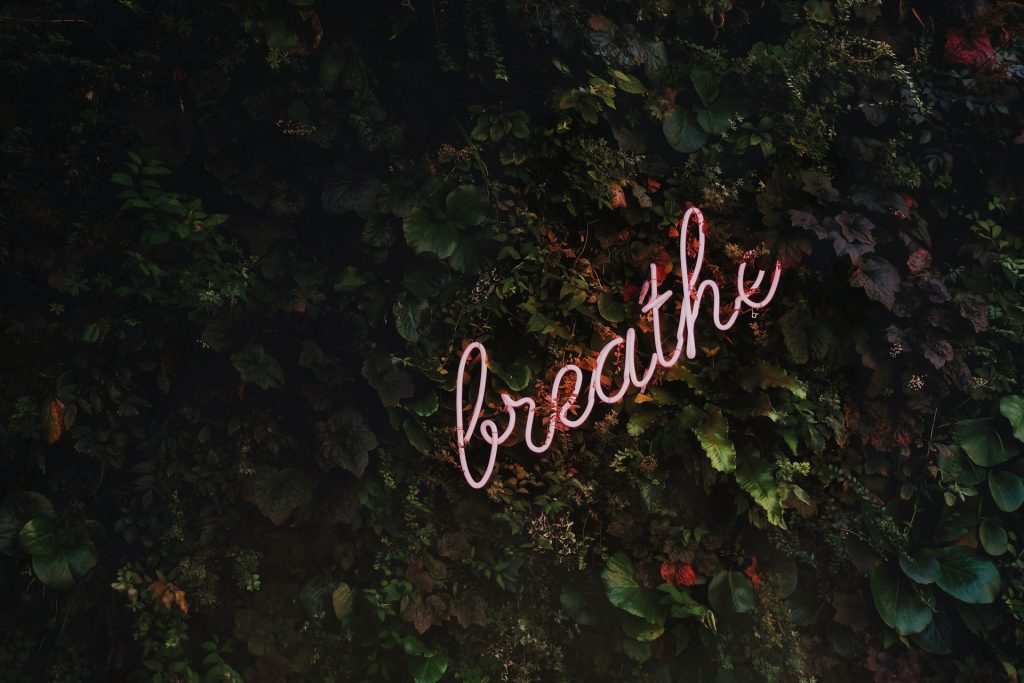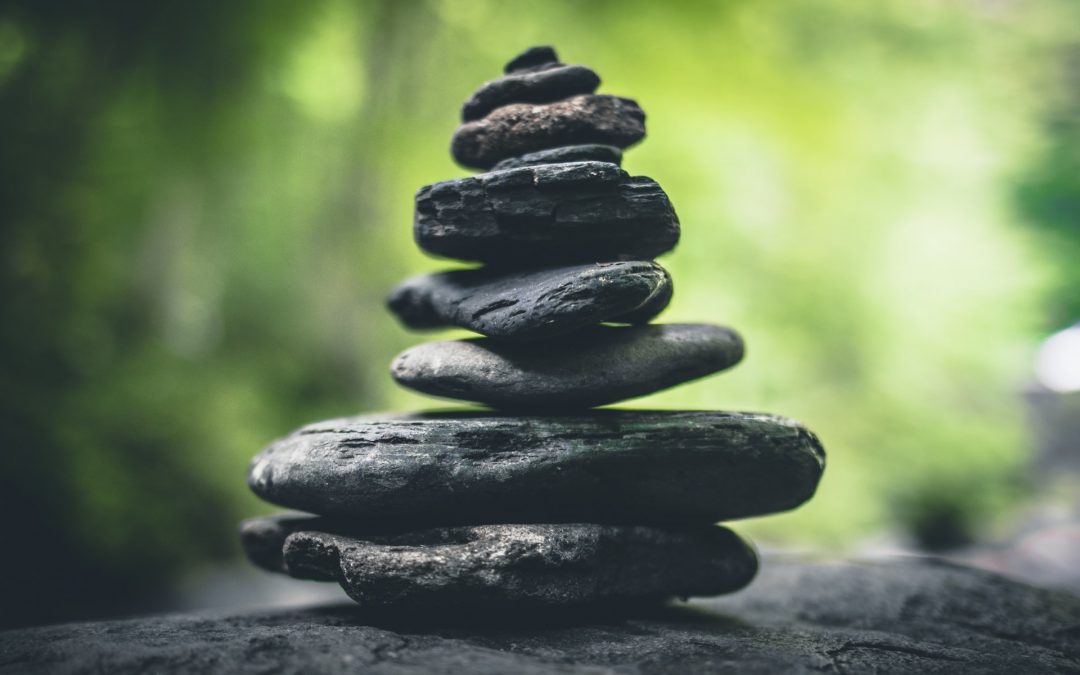Mindfulness is all the rage today, but this practice has ancient roots. Thanks to modern research, science has managed to demystify mindfulness and meditation. But how exactly do you practice it?
If you’re new to the idea of mindfulness, you may be wondering what it is, its benefits and how to get started with it.
What is Mindfulness?
Mindfulness is a concept that’s hard to define because it comes in so many different forms. Even something as simple as washing the dishes can be transformed into a mindfulness practice.
At its heart, mindfulness is about being calmly aware of the present moment without judgment.
Simply put, you are keenly aware of where you are and what you are doing, but you’re not reacting or judging the moment. Imagine a chaotic street and one person sitting calmly and peacefully at the center of it all. That’s the idea of mindfulness. No matter what is happening at any given moment, we are aware of it, but we are not reacting to it.
Everyone – no matter your age or where you come from – can practice mindfulness. But in today’s modern world, where we are constantly bombarded with information and distraction, it can be challenging to tap into this innate ability.
Fortunately, you can use several techniques and exercises to practice mindfulness and help you enter this state of mind (more on that soon).
What is the History of Mindfulness?
Mindfulness is a practice that dates back thousands of years. The exact origin of the practice is unknown, but it’s a concept with roots in Eastern religious and secular traditions, including Buddhism, Hinduism and yoga. Scholars also argue that the idea of mindfulness also has roots in Islam, Judaism and Christianity.
Still, practitioners and teachers today generally learned about mindfulness in either the Hindu or Buddhist tradition.
Jon Kabat-Zinn is credited with bringing the concept of mindfulness from the East to the West. He founded the Center for Mindfulness, which is located at the University of Massachusetts Medical School. He is also the creator of the Mindfulness-Based Stress Reduction, or MBSR, eight-week program.
Kabat-Zinn studied mindfulness under Buddhist teachers, including the well-known Thich Nhat Hanh. Then, he integrated the idea of mindfulness into Western science to create his program.
How Does Mindfulness Make You Feel?
Because mindfulness is a personal practice, it’s difficult to describe how it feels. You may feel a whirlwind of emotions during your session, but if you’re succeeding with your practice, those emotions will come and go like clouds floating through the sky.
When you are purposely making yourself aware of your surroundings, you may experience:
- Sensations in the body. For example, if you are anxious, you may notice a tightening in your chest or your quick heartbeat.
- Sights. You may notice every little detail in the world around you.
- Emotions. If you have pent-up feelings, like anger or sadness, these may come through and in an intense way. For many, mindfulness acts as a release for these emotions. Others feel intense euphoria or joy.
- Thoughts. We all have an endless supply of thoughts running through our minds 24/7, but how many do you pay attention to? Mindfulness can make you keenly aware of your thoughts and just how intrusive they can be.
Many people associate mindfulness with joy and happiness. Perhaps that’s because when you are practicing, you are living moment to moment. You stop that vicious cycle of being stuck in the past or drowning in painful emotions. For just a moment in time, you get out of your own head.
But getting to that point of joy and happiness isn’t always easy. Many newbies say that practicing mindfulness makes them uncomfortable, but that’s a sign that it’s working. Why? Because when we’re truly mindful, we’re hyper-aware of all of our emotions, and that includes the not-so-pleasant ones, like:
- Anger
- Sadness
- Jealousy
- Loneliness
- Fear
The goal is to be aware of these emotions but not to give into them. You experience them without becoming overwhelmed by them. As you become less reactive to these emotions through your mindfulness practice, you can make better decisions and handle day-to-day situations with a clear mind.

What are the Benefits of Mindfulness?
One thing that sets mindfulness apart from some other stress-reduction techniques is that it’s backed by science. The practice has been heavily studied, and it continues to be studied today.
Research has found that mindfulness can be beneficial for both your physical and mental health.
Mindfulness may help:
Reduce Stress
Several studies support the claim that mindfulness can reduce stress. For example, in one study, injured athletes who practiced mindfulness meditation saw decreased anxiety and stress. The mindfulness group also saw an increase in pain tolerance.
Reducing stress can go a long way in helping you stay healthy and happy.
Ease Anxiety and Depression
Mindfulness is often used to help with anxiety and depression. One meta-analysis involving 47 studies found that mindfulness meditation programs effectively reduced the adverse effects of stress. The results were comparable to antidepressants.
Promote Immune Health
Most people associate mindfulness with mental health, but it may also help with your physical health – including your immune health.
One review looked at 20 random clinical trials with over 1,600 participants. Researchers found that mindfulness meditation may help:
- Reduce pro-inflammatory responses
- Increase enzyme activity that helps protect against cell aging
More research is needed to better understand mindfulness’ effects on the immune system, but the results so far have been promising.
The theory is that the practice of mindfulness can help reduce stress, which can ultimately help prevent the immune system from becoming run down. Chronic stress can lead to inflammation that may hinder your immune response.
Change Your Brain
Practicing mindfulness meditation can literally change your brain – and for the better. One study took a look at MRI scans of people who practiced meditation for an eight-week course. The results showed that the area of the brain associated with “fight or flight,” the amygdala, shrank. The pre-frontal cortex, which is linked to concentration, awareness and decision-making, became thicker.
Not only do these areas change, but the way in which they connect also changes. The results showed that the connection between the amygdala and other areas of the brain became weaker. The connection between the pre-frontal cortex and the rest of the brain got stronger.
Mindfulness meditation can change the brain in other ways. For example, researchers have found that the practice can make you less aversive to stimuli, including pain.
A fascinating find was that the brain only changes for a period of time. Once you become an expert in mindfulness meditation, these areas of the brain start to normalize again. Researchers found that brain scans of expert meditators who weren’t meditating were similar to those who were meditating. In other words, the meditative state becomes the default state.
How to Practice Mindfulness
The benefits of mindfulness are impressive, but how do you practice it? If you’re wondering, “How can I stay mindful all day?” we’re going to share some tips to help you get started.
Mindfulness Techniques
The reason why so many people struggle with mindfulness, and meditation in general, is because there’s really no solid blueprint for success. If you’re baking a cake, you follow a recipe and wind up with exactly what you expect – a cake.
The mindfulness state of mind is difficult to describe, so how do you know when you’ve arrived? That’s what makes this a tricky practice.
Fortunately, there are many mindfulness exercises you can use to help you master this practice.
Eating Mindfully
One simple way to practice mindfulness is when you eat. It’s something we all do every single day, so this allows you to be mindful at least once per day.
Try this:
- Focus on your breathing. Close your eyes, and breathe slowly in and out of your belly. Take 10 deep breaths before starting your meal.
- Continue breathing deeply and begin eating. Take it slow, and take deep breaths as you continue eating.
- Relax your body. It is much easier to digest and absorb the food you eat when your body is in a relaxed state.
- Take each bite mindfully. Focus on the textures and flavors you’re experiencing. Feel the joy with each bite.
By focusing your attention on the experience of taking each bite, you can start building your mindfulness skills.
Practice STOP
It’s a fitting name for this practice.
- Stand up on your feet. Breathe. Feel the ground beneath your feet and your connection to the earth.
- Tune in. Bring your attention to the physical sensations in your body. Exhale any unpleasant sensations or thoughts. Inhale joy and let it fill you with each breath.
- Observe the world around you. Find something in the room or outdoors that is pleasing or beautiful.
- Possibility. Think about possibility and how you can take the next step forward.
Taking the time to stop and focus your awareness on your surroundings can help you get into a mindful state.
Body Scan
The body scan exercise is a simple way to practice mindfulness, and it’s one of the more accessible ways for beginners to get initiated with the practice.
Try this:
- Start by laying down on your back with your palms facing up and your feet apart. If you’re unable to lay down, you can do this while sitting comfortably in a chair with your feet resting on the floor.
- Try to limit your movement during this practice.
- Bring your attention to your breath, its rhythm and the sensation of inhaling and exhaling. Do not change the way you breathe, but rather, just bring a gentle awareness to your natural breath.
- Now, bring your awareness to your body. Notice how your clothing feels against your skin, the temperature of your body and the environment surrounding you.
- Next, focus on the areas of the body that are feeling light, heavy, tingly or sore. Make a note of any areas where you may feel overly stimulated or have no sensation at all.
- Now, start focusing on each part of your body one at a time – from your head to your toes. Notice sensations or lack of feeling in each area.
Once you have gone through each area of the body, you can open your eyes and start to shift your position slowly.
Ensure that you choose a quiet place for this exercise where you won’t be disturbed by others.
The Five Senses Technique
The Five Senses exercise is a great way to use mindfulness anytime, anywhere. It’s something you can do quickly and without anyone knowing what you’re doing. The goal is to experience something with all of your senses.
- Find five things you can see. Look around. Find five things you can see. These should be things that you wouldn’t normally pay attention to, like a crack in the sidewalk.
- Find four things you feel. Bring your awareness to four things you’re feeling in this moment, like the wind in your hair or the texture of your clothing.
- Find three things that you can hear. Listen for a moment. Find three things that you can hear, whether it’s the chirping of birds or the quiet hum of the fan.
- Find two things you can smell. Turn your attention to the scents around you, and pick out two that you notice.
- Find one thing that you can taste. What is one thing that you can taste right now? It may just be the taste of your mouth, or you can take a deep breath to taste the air.
The Five Senses exercise is a simple way to bring awareness to the present moment and really experience everything with all of your senses.

Mindful Breathing
The techniques above are great ways to get started with mindfulness. And if you notice, many of them aim to bring your attention to your breath.
Focusing on the breath is one of the simplest and most effective ways to practice mindfulness. Take 15 minutes out of your day to follow this practice.
Mindful breathing is so simple:
- Focus your attention on each inhale and exhale.
You can practice mindful breathing while sitting, lying or standing. Your eyes can be open or closed – it’s up to you.
While you can practice this breathing exercise anytime you want, it can help to use it when you’re experiencing stress. If it’s a particularly stressful situation, you can take an exaggerated first breath to bring your mind to a state of calmness.
- Take a long, deep breath through your nose.
- Hold it at the top of the inhale for two seconds.
- Take a long exhale through the mouth.
Focusing on your breath and being aware of your surroundings will help put you in a meditative state and trigger your body’s relaxation response.
With daily practice, you may find that your emotional responses and stress responses start to improve.
Walking Meditation
Like the body scan exercise, walking meditation is another accessible, simple way to practice mindfulness. All it takes is 10 minutes a day.
You can practice walking meditation anywhere, but we recommend finding a peaceful park or a walking trail if the weather permits. Being out in nature will make it easier to direct your attention to the present moment.
- Start by walking 10-15 steps forward.
- Pause for as long as you like and take a deep breath.
- Turn around, and begin walking in the opposite direction.
- Repeat the pause and keep taking deep breaths.
- As you take each step, think deliberately about each action: lifting your foot, moving the foot forward, placing the foot on the floor, shifting forward and moving the weight from the back to the front of your foot. You can also bring your attention to other sensations, sounds and smells.
- Walk slowly. You can keep your hands clasped behind or in front of you.
If you notice your mind wandering, don’t worry – that’s normal. Each time you become aware of the wandering, redirect your focus back to your walking exercise.
Try to incorporate walking meditation into your daily routine, and you’ll notice yourself becoming more mindful with each passing day.
Mindfulness Meditation
Of course, mindfulness meditation is one of the best ways to practice mindfulness. All of the exercises and techniques we’ve covered so far are, essentially, a form of meditation.
The goal is simple:
- Sit peacefully.
- Focus on your breath.
- Bring your attention to the present moment.
If you’re having difficulty sitting calmly and allowing your thoughts to just float on, then try a guided meditation. Here are some recommended practices to try.
Mindfulness Journal
If you’re looking for a more structured way to incorporate mindfulness into your life, a journal may help. There are many mindfulness journals out there, and they aim to help change the way you think and observe the world around you.
Some great mindfulness journals include:
Start Where You Are: A Journal for Self-Exploration
Start Where You Are is an interactive mindfulness journal that encourages you to take a look at the present moment and be grateful for what you have.
In this journal, you’ll find:
- Inspiring quotes
- Writing prompts
- Room for sketches
The exercises in the book are designed to help you take control of your anxious thoughts while changing your thinking patterns.
The Mindful Journal: Seven Minutes a Day for A Better, More Meaningful Life
The Mindful Journal asks you to take just seven minutes a day to be mindful and grateful for the things in your life. This journal includes three months of non-dated pages for entries. You’re asked to write down two things that you’re grateful for each morning and evening.
Each day, you’re given eight feeling words to choose from, and you can incorporate them into your entries however you see fit.
It also includes almost 100 quotes, 13 different mindfulness exercises and blank pages so that you can write down whatever you want.
Mindfulness Books
Journals are a great way to take an interactive approach to mindfulness, but books can also be beneficial. Books can better explain the concepts behind mindfulness and give you some deeper insight into the practice. Many will also include exercises and techniques to help you on your mindfulness journey.
Some best-selling mindfulness books include:
- The Power of Now by Eckhart Tolle
- The Miracle of Mindfulness: An Introduction to the Practice of Meditation by Thich Nhat Hanh
- Practicing Mindfulness by Matthew Sockolov
- Wherever You Go There You Are by Jon Kabat-Zinn
The Takeaway
There are so many ways to practice mindfulness. If you’re struggling to get into that state of present-moment awareness, there is always a new method to try. Use the tips above to get started on your mindfulness journey today.
Rene is a creative, little gnome. When she's not diving deep into research on health and wellness, she's spending here time out in nature, growing her homestead, photographing wildlife, doing yoga or enjoying a zen (depending on the day) moment with her fur babies. And on top of all of that, she's a professional writer by day, helping businesses around the world grow.

